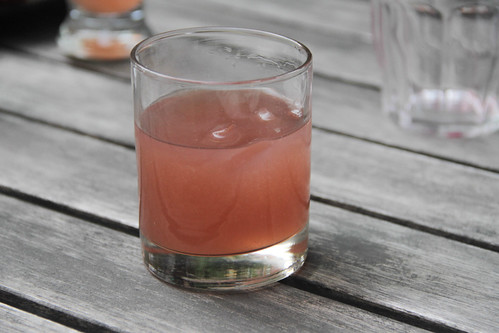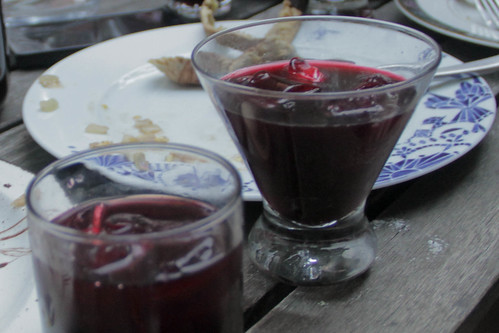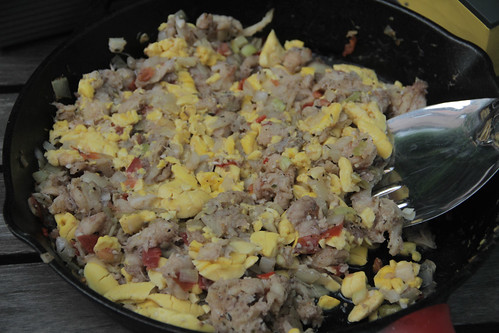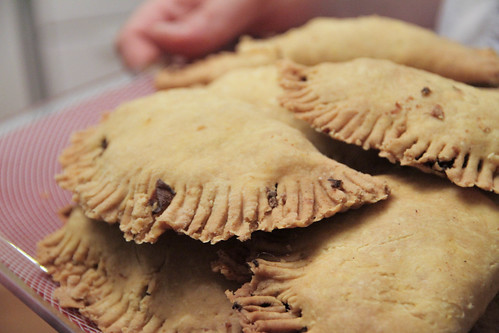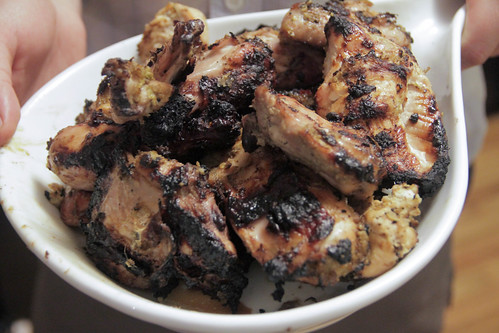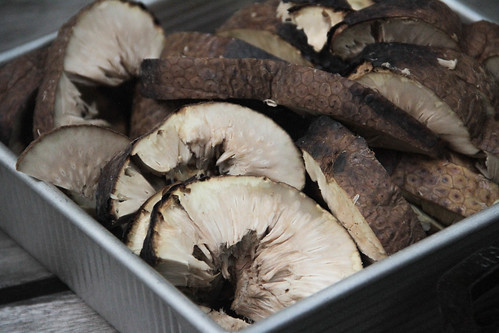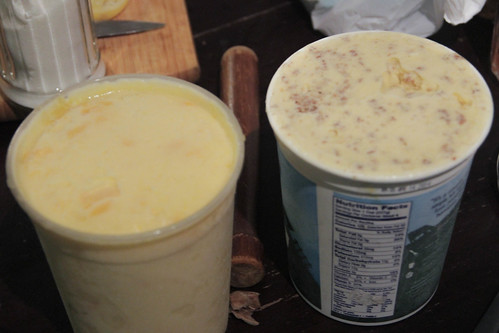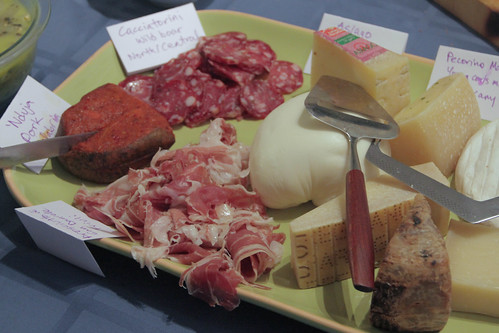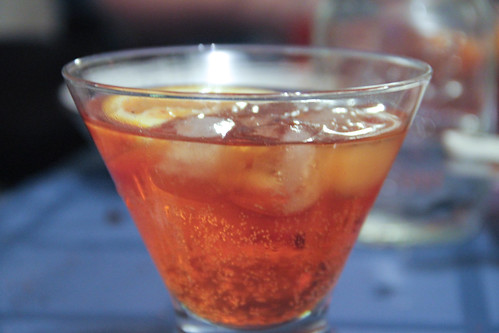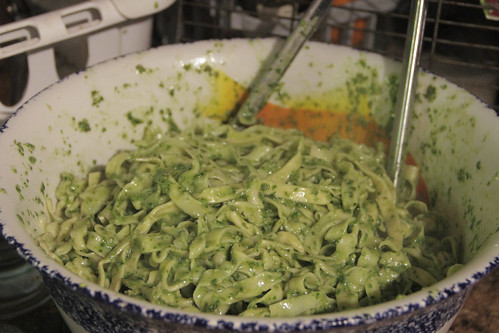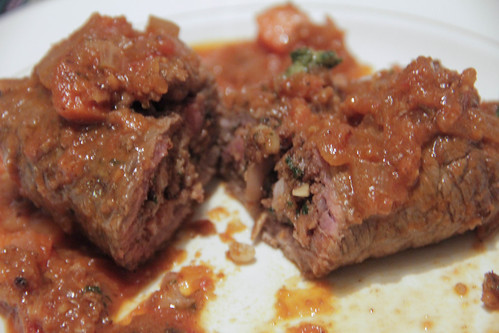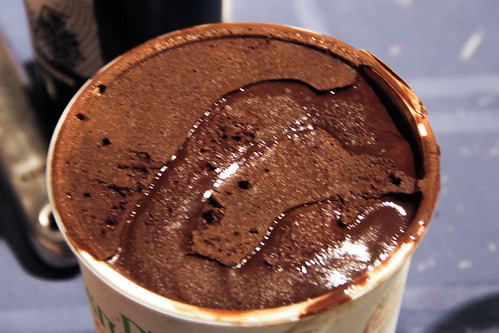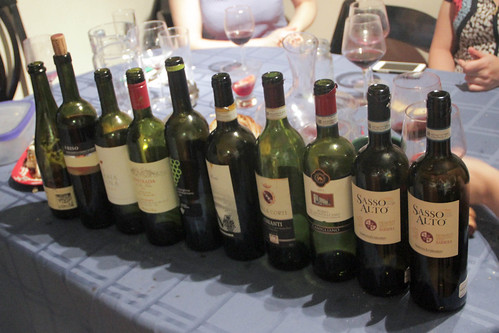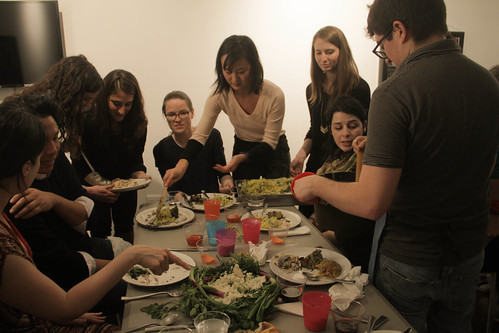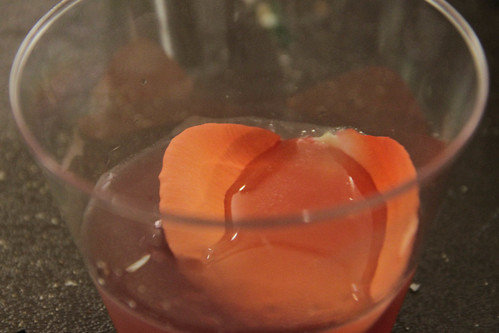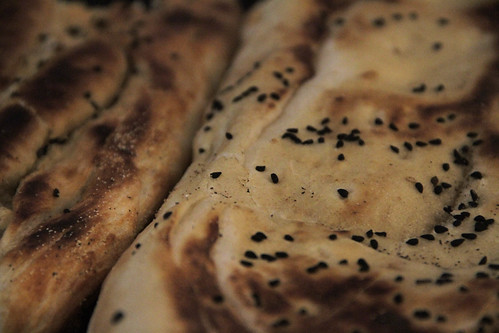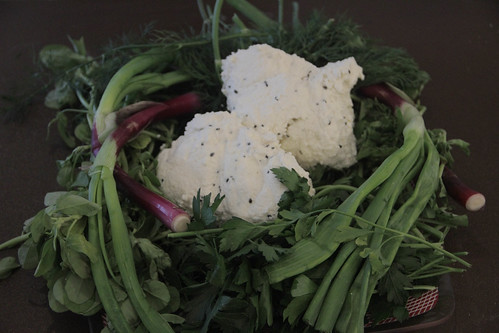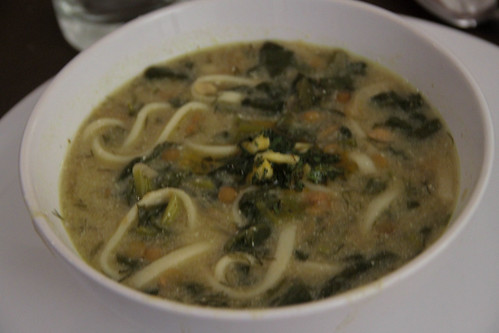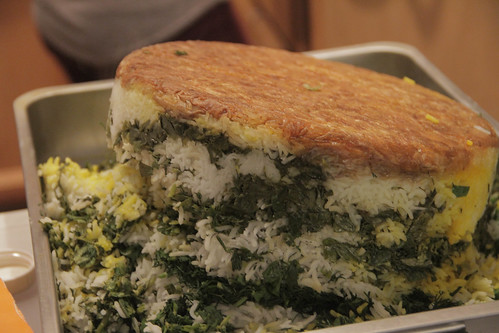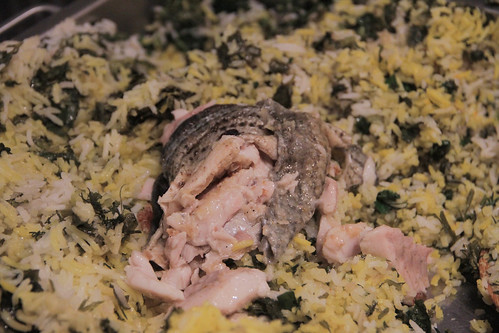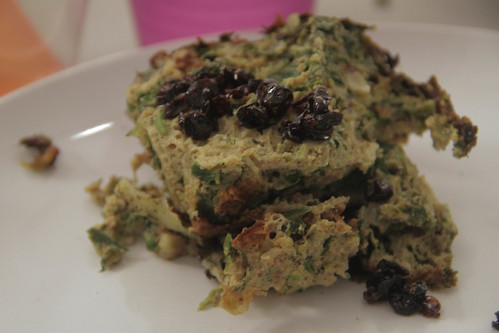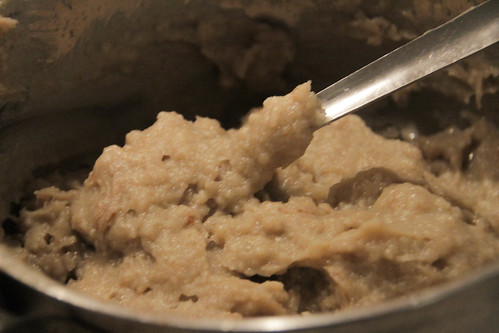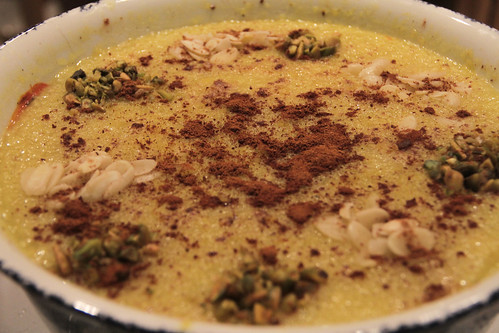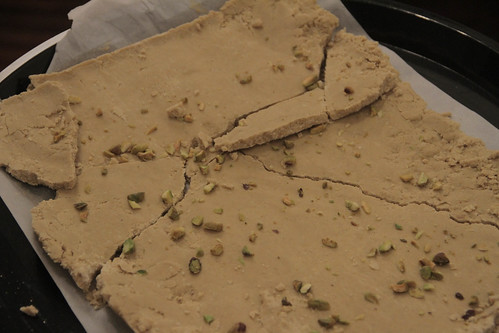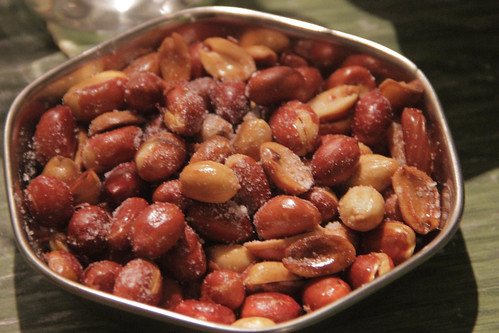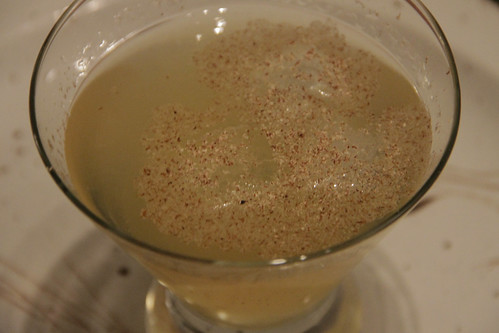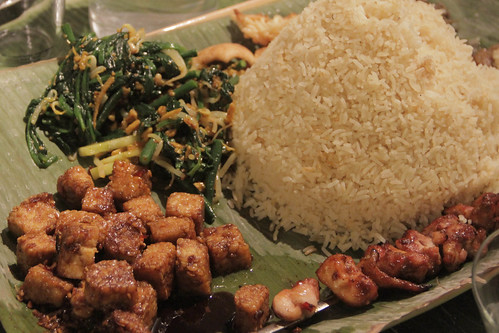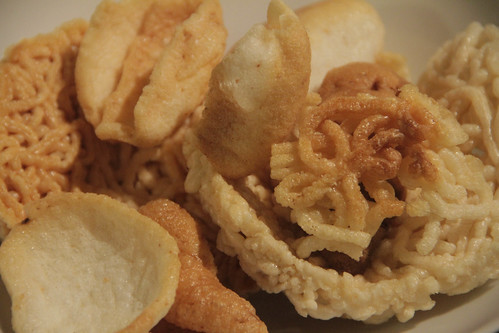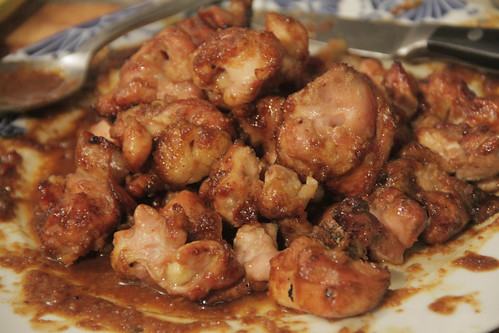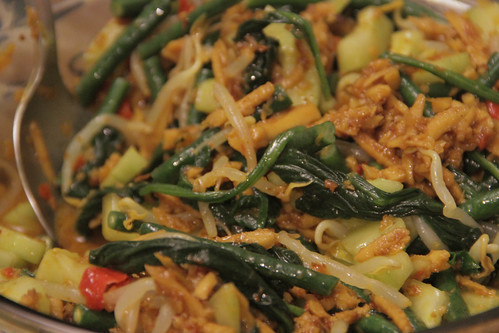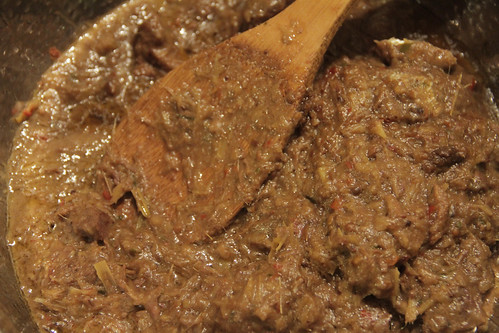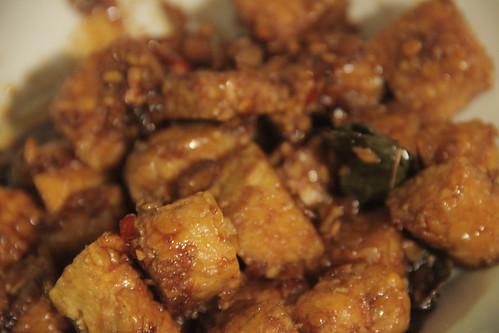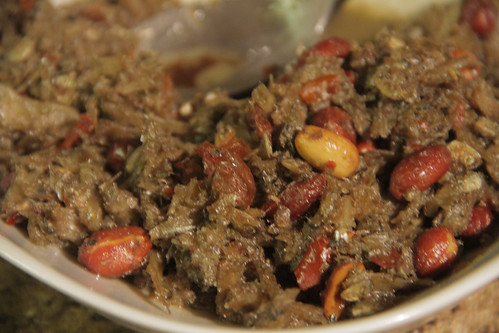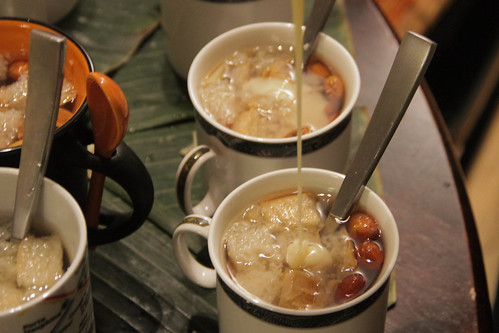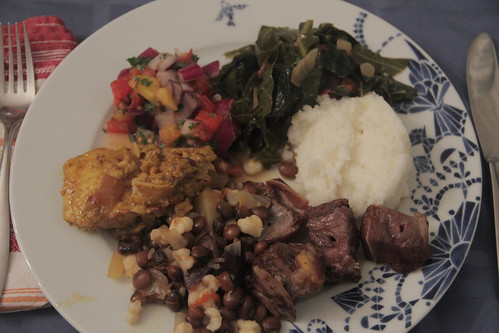 We've already enjoyed three meals from the Horn of Africa, but it's taken us until the K's to start into East Africa proper. It looks a whole lot more like Central African, though I'm happy and relieved to report that we found it quite a bit tastier.
We've already enjoyed three meals from the Horn of Africa, but it's taken us until the K's to start into East Africa proper. It looks a whole lot more like Central African, though I'm happy and relieved to report that we found it quite a bit tastier.
As with so many former colonial countries, the borders of Kenya arbitrarily threw a bunch of tribes together. Accordingly, there's not exactly a national cuisine as such, but there are a few dishes that are extremely common throughout the country. So we made those collards and corn mush dishes, and rounded out the meal with dishes chosen from around the counties that stretch from the sea to Africa's highest mountain.

After our small trial run for Kazakhstan, we went big for this meal, taking advantage of our new, large dining room to seat twelve around two tables. Our guests were Hannah, Emily, Frank, Don, Chelsea, Sebastian, Craig, Laura, Kaely, and Brett. The first four arrived a half hour early, due to an error in my email, but they proved super helpful in the kitchen, as I'd once again misestimated the prep time in the dishes and was relieved to have a small army of choppers, stirrers, and washers appear! Thanks, folks!
And extra-special thanks to my buddy Walter, who lived in Kenya for several years, and gave me some excellent and very useful advice on what to serve. I love it when someone can distill the essence of a country's foodways and the culture around it — I still do plenty of research to support and understand, but the guidance and structure is invaluable.
Dawa | Vodka and lime with honey swizzle | Recipe
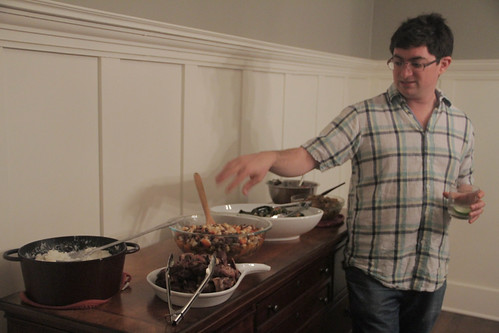
Dawa is the Swahili word for medicine. In this case, it's got the spoonful of sugar built right in, as this drink is essentially a caipiroska (vodka-lime-sugar) taken to the next level with a swizzle-stick dipped in honey. It's tart, it's sweet, it's boozy. And it's in my hand in the above photo!
Ugali | Cornmeal porridge | Recipe
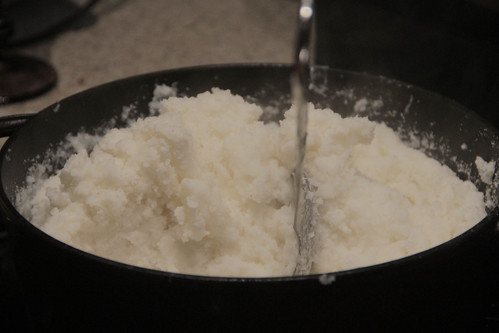
Just about all of sub-Saharan Africa has some sort of mush as the bedrock of a meal. Kenya's no different. I read in a few places that a meal is considered incomplete without this simple mix of cornmeal and water, mixed so thick that you can stand a spoon in it, and then tear off clumps with your hand to use as a vessel for scooping whatever else is on the plate.
Sukuma wiki | Collard greens | Recipe
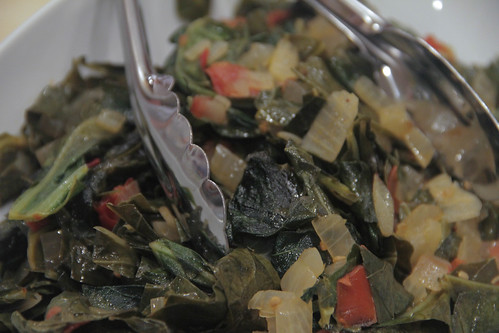
If you're the average Kenyan on an average day, that other thing on your plate is probably the humble, tasty, nutritious collard greens, simmered for a long time with maybe some onions, tomato, and a bouillon cube. The name means "to stretch the week," as in, it's the food you can afford to eat when your money's running out before you're next paid.
I was afraid I'd find it pretty bland, given that it wouldn't have the benefit of ham or bacon as done in Southern cooking. Maybe it's because this was some super fresh (and enormous! the leaves were like two feet long!) farmers-market collards, or maybe it's really that easy to bring good flavor with a few hours of simmering, or maybe the MSG in the bouillon saved the day. Whatever the reason, the greens were tasty and popular.
Nyama choma | Grilled goat
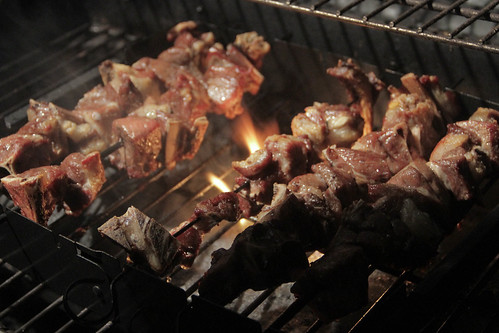
Some cultures, such as Chinese, bring romance and storytelling to the names of their dishes. So too with parts of Africa: Cameroon has a dish Poulet D-G, standing for directeur général, since the dish is considered so fancy and tasty it's fit for the boss. Not so much with nyama choma, which literally means "burn the meat." To be fair, that's pretty much all you do: once the meat's on the skewers, all you do is slather it with warm salted water every few minutes while letting the flames sear the outside and seal the tasty juices on the inside.
The meat in question here is goat. Several months ago, someone who I wish I could remember so I could give them the credit said, "Goat is like soccer: popular in most of the world, but not the U.S." Fortunately, it's not too hard to find in Portland. I biked in the rain to a Somali market up on Killingsworth, which offered me a choice of leg or shoulder — and we agreed that the latter is the better choice for kabobs. $5/pound including cutting into kabob size. In Kenya, the sale price would have also included free grilling with a place to sit in the back!
But who cares about what it's called or where I got it. The suckers were scrumptious, embarrassingly so given how little I had to do in terms of cheffing to get them on the table. I'm certainly doing this one again on a warm weeknight.
Kachumbari | Tomato "salsa" | Recipe
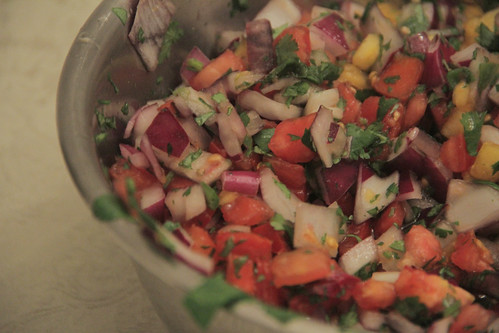
Mexican pico de gallo is a great foil for the rich meat on a taco. The East Africans pair their grilled meats with almost exactly the same condiment — fresh tomatoes, onions, cilantro, lime, chili — but it came to them via a completely independent and unlikely source: the English! Just as, in the Egypt nosh, we saw how they introduced a rice-and-lentil dish from India that transformed into the national food, they also brought an onion-and-tomato salad that became ubiquitous on the other side of the Indian Ocean. No point in reviewing: this really was exactly the same as how I'd make a pico de gallo.
Mchuzi wa samaki | Swahili fish curry | Recipe
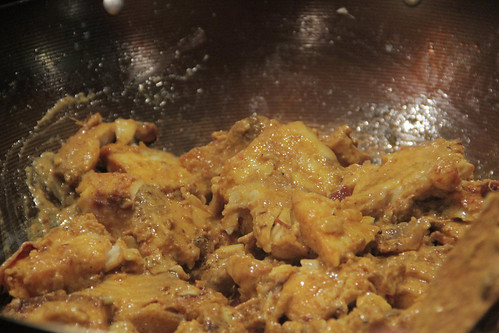
Whereas the grilled goat was the essence of simplicity, likely borne of the necessity of a nomadic lifestyle, this coastal curry shows off what you can do when you're in a tropical setting on the sea, with both the fish and the trading it entails. It gets its name from the coastal Swahili people, whose Kiswahili language has become the common language of much of East Africa. The dish was quite tasty, with a double-dose of turmeric imparting a pleasing color and a haunting flavor that brought zing to an otherwise simply flavored meal.
Muthokoi | Cracked corn and pigeon pea stew | Recipe

This dish of cracked corn and pigeon peas takes us back inland to the Akamba tribe of Eastern Kenya, and we're back to simple, earthy foods. I wasn't planning on making it, but at Mama Pauline's African Market, I got the two ingredients on a hunch that I'd find something to make with them. As you'd guess, this was a hearty and filling dish, with the flavor again coming from store-bought seasoning, a specific brand name called Royco. It's not even listed in the ingredients, and it's even written in lower-case in the recipe, that's how common the spice blend is. (Should you want to make this dish, you could use a bouillon cube, or look up "homemade royco" to find several variants. I can't remember which I used!)
Tea and cake
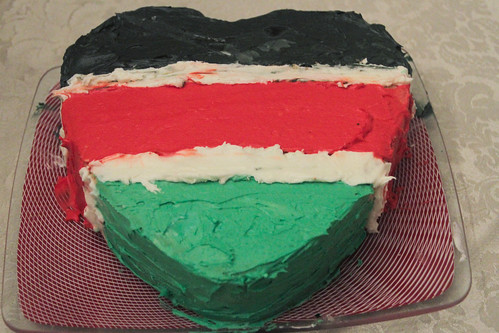
Walter, my buddy who'd lived several years in Kenya, gave me all sorts of specific and useful advice on the other dishes. But what he said about dessert cracked me up: "You MUST serve Bad Cake. It's effectively the national dish and national pastime. Kenyans love cake more than any people I've ever known, and they make cake worse than any people I've ever known also." This proved quite a challenge: how to make a cake that'd be intentionally bad? And bad in what way? Well, since I had a few gluten-free folks coming, I took advantage of the opportunity, and simply made a gluten-free yellow cake. Maybe it wasn't bad-to-Walter's-taste in the way Kenyans do it, but it definitely was, well, a gluten-free cake. To make the cake more Kenyan, I decorated it like the flag, which was easier and more fun than I expected.
A surprisingly nice start to East Africa, let's see how things go as we explore farther down the coast.

